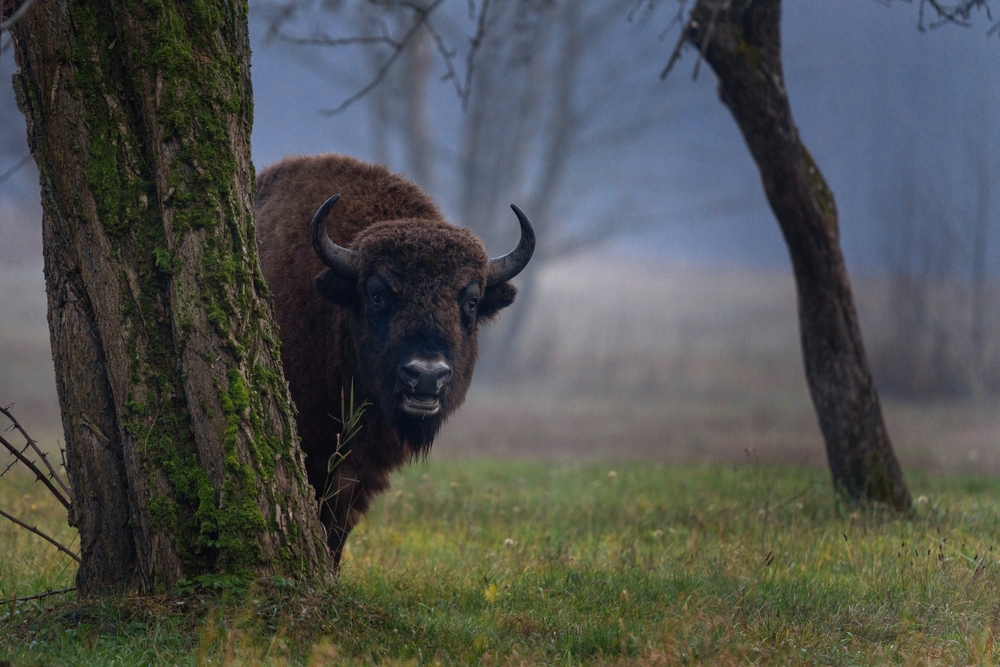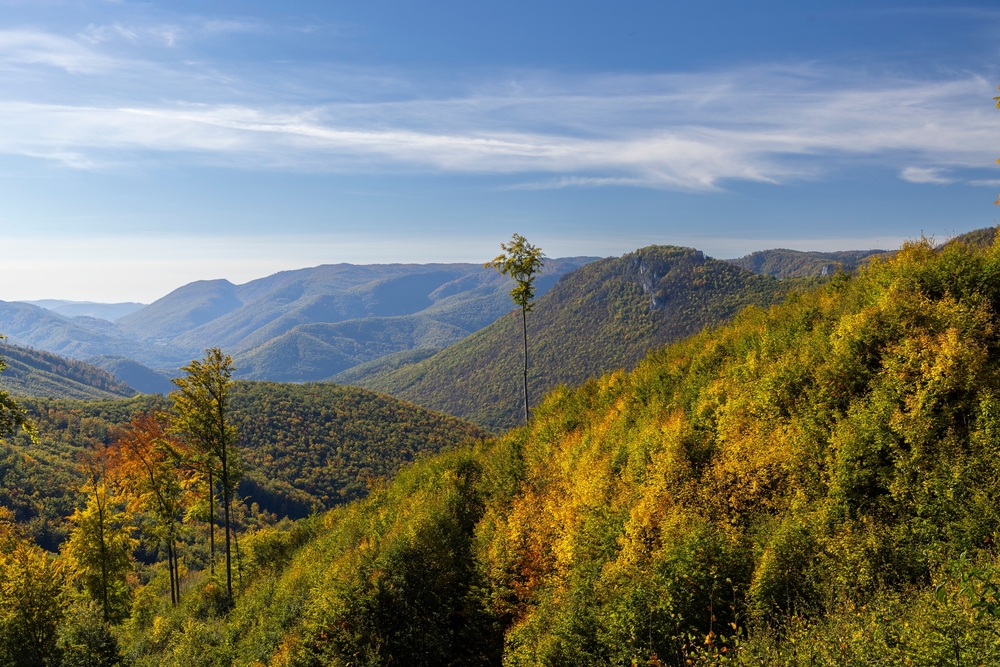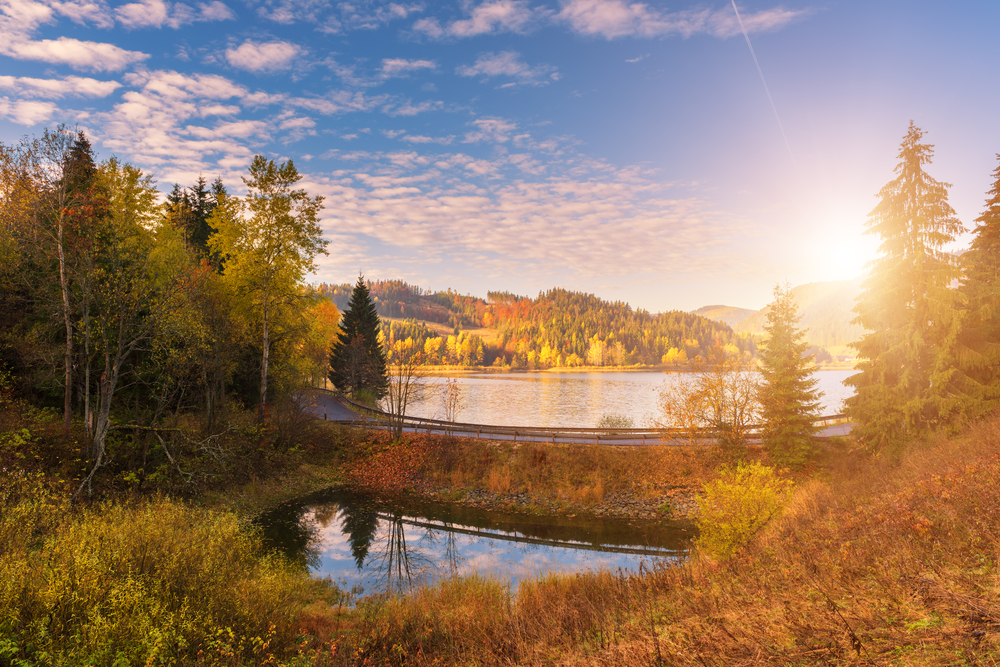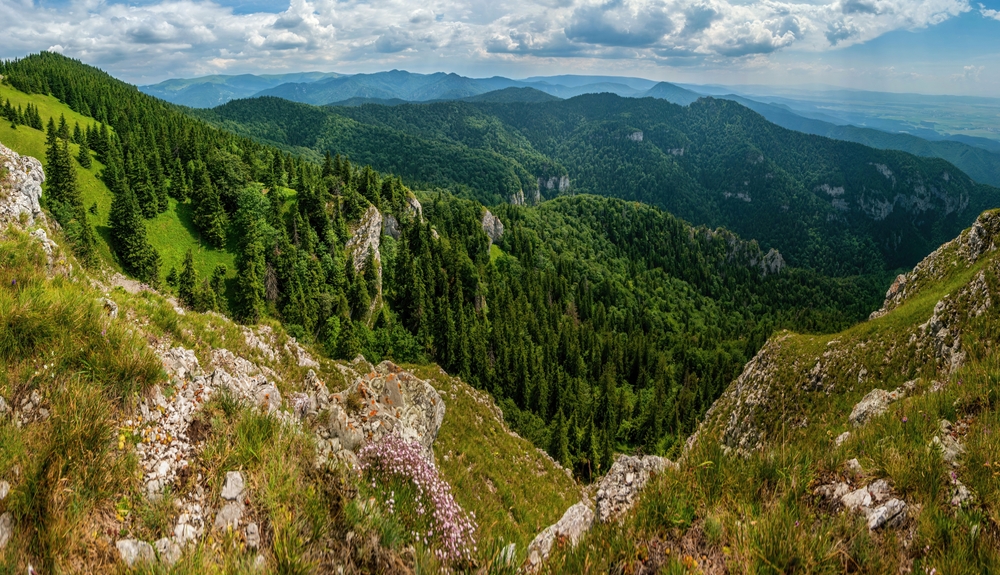Mala Fatra Overview
Malá Fatra National Park, known locally as Národný park Malá Fatra, is a protected area in northwestern Slovakia, covering approximately 89 square miles (232 square kilometers).
Situated in the Malá Fatra mountain range, the park is a haven of dramatic landscapes, rugged peaks, and lush valleys. The park’s terrain is dominated by limestone and dolomite formations, creating striking cliffs and deep gorges. The highest peak, Veľký Kriváň, stands at 5,318 feet (1,621 meters), offering panoramic views of the surrounding Carpathian landscapes.
The park is also known for its distinctive rock formations, including the famous Jánošíkove Diery, a network of narrow canyons adorned with waterfalls and wooden footbridges, providing a stunning experience for hikers and nature lovers. The Varínka and Orava rivers cut through the park, supporting diverse vegetation, including mixed forests of beech, fir, spruce, and maple, which transform into a brilliant display of colors in autumn.
The park is home to an abundance of wildlife, with large mammals such as the Eurasian brown bear, gray wolf, and lynx thriving in the dense forests. Red deer, roe deer, and wild boar are commonly sighted, while smaller species like the European pine marten and red fox add to the region’s biodiversity.
Birdwatchers can spot golden eagles soaring above the peaks, while the western capercaillie and Eurasian eagle-owl make their homes within the wooded areas. The diverse flora of Malá Fatra includes rare alpine and subalpine species, making it a significant area for botanical research and conservation.
One of the park’s most popular features is Vrátna Valley, a picturesque area offering year-round activities. In the winter, the region transforms into a prime skiing destination, with the Vrátna Free Time Zone attracting visitors for skiing and snowboarding.
During the warmer months, the area is a hotspot for hiking, with trails leading to breathtaking viewpoints such as Chleb and Stoh. Jánošíkove Diery, named after the legendary Slovak outlaw Juraj Jánošík, is a favorite attraction, drawing adventurers to its cascades, ladders, and narrow gorges. The village of Terchová, located near the park, is known for its folklore traditions and serves as a gateway for many visitors exploring the park.
Visitors can experience Malá Fatra National Park through an extensive network of hiking trails, which vary in difficulty and offer opportunities for mountaineering, rock climbing, and cycling. Scenic cable cars transport visitors to higher altitudes, providing access to panoramic routes.
The park is also a prime location for eco-tourism, with guided nature walks that educate visitors on the region’s unique ecosystem. Traditional mountain chalets offer accommodation and local Slovak cuisine, enhancing the immersive experience of exploring the park.
Conservation efforts in Malá Fatra focus on protecting its fragile ecosystems from the impacts of tourism and climate change. Strict regulations help preserve the habitats of large carnivores, while sustainable tourism initiatives aim to balance visitor access with environmental protection.
Efforts to control illegal logging and poaching have seen progress, ensuring the long-term survival of the park’s rich biodiversity. Through ongoing research and conservation programs, Malá Fatra National Park remains a vital refuge for Slovakia’s natural heritage, providing a pristine environment for wildlife and visitors alike.

















































































